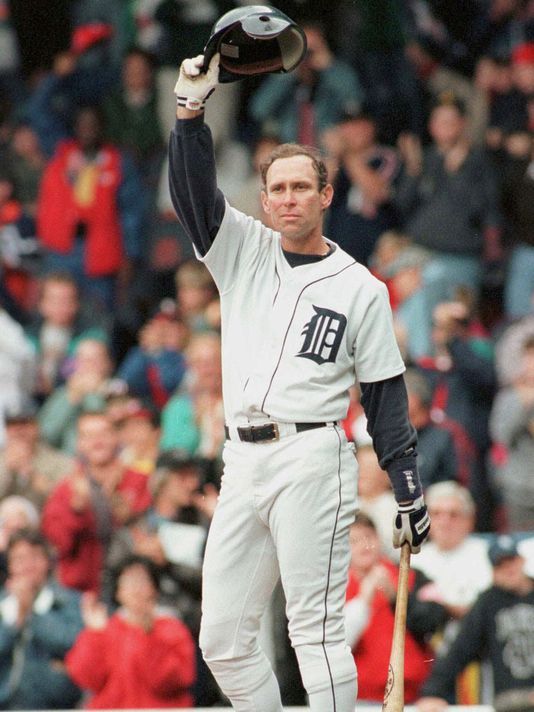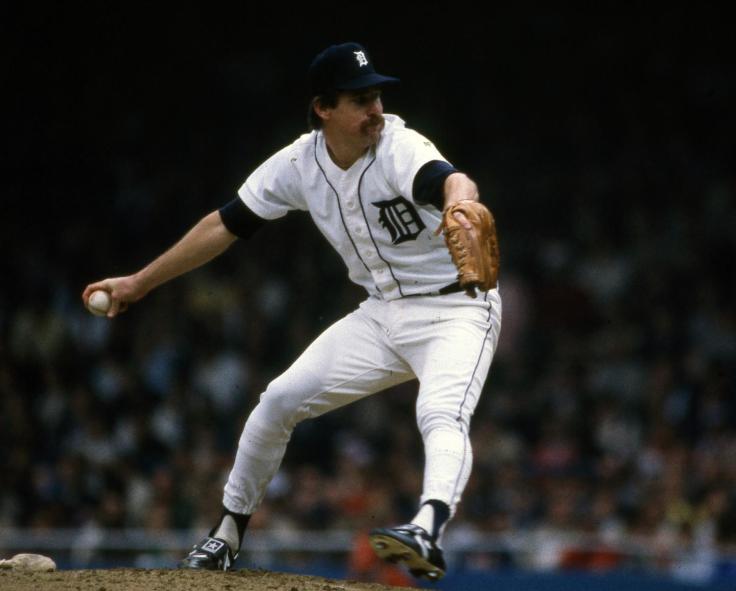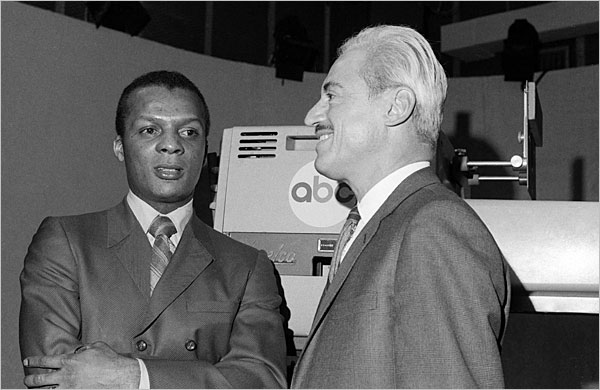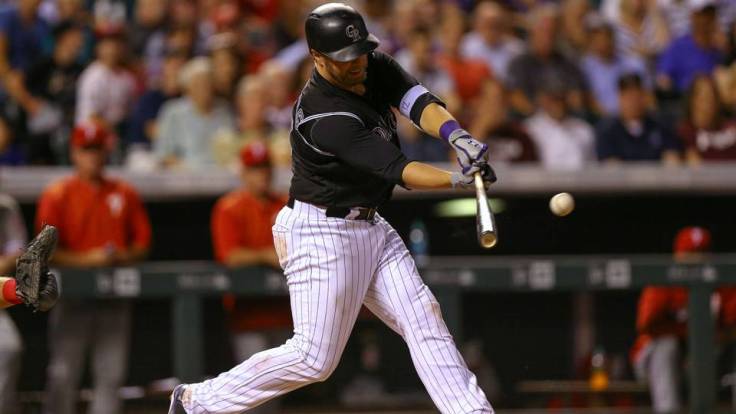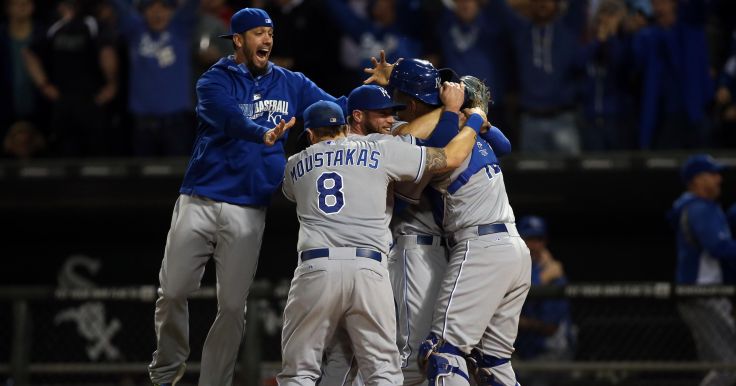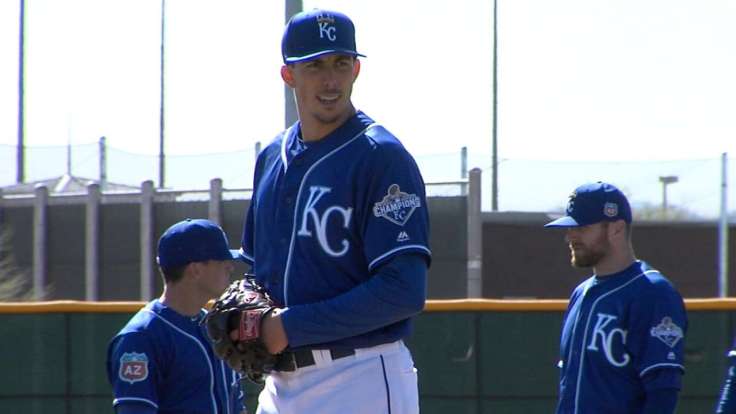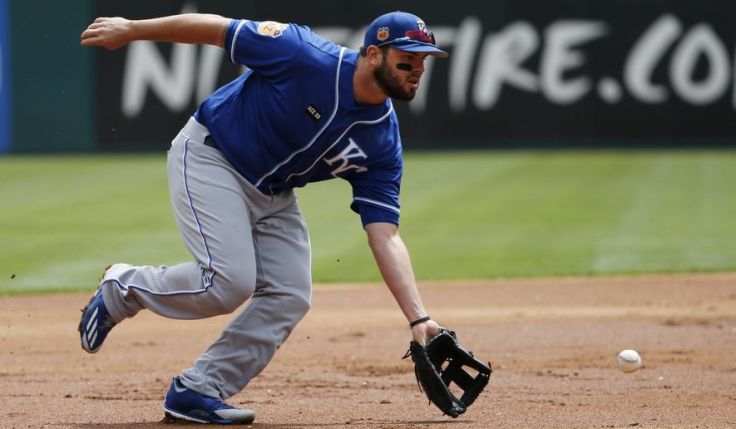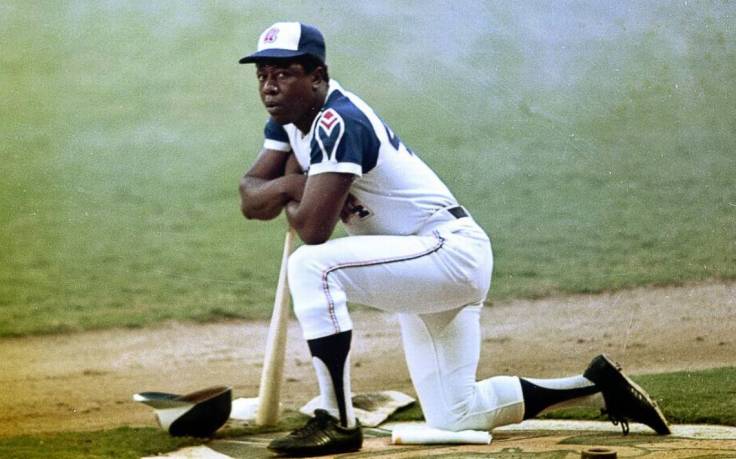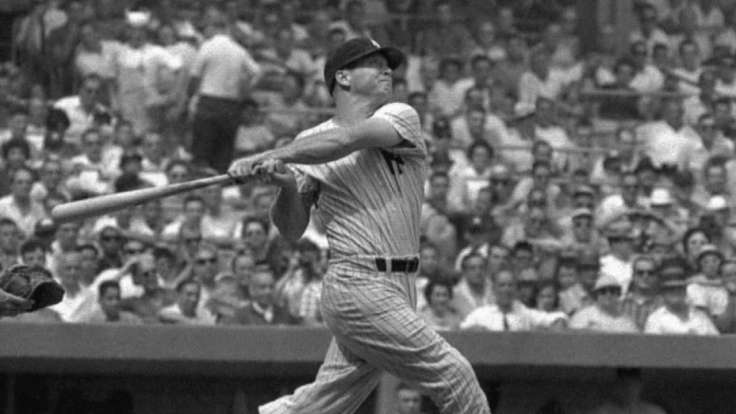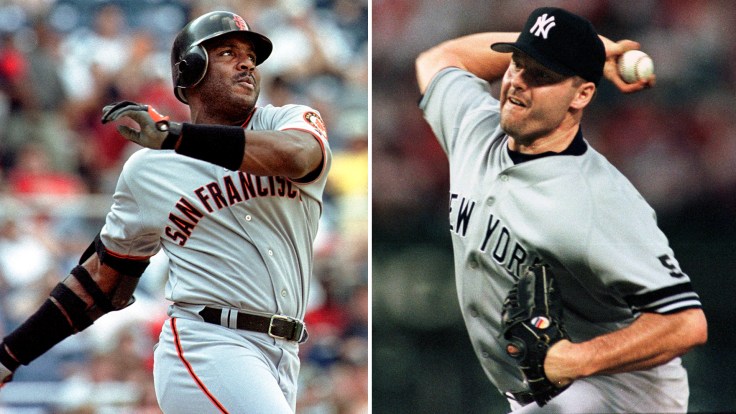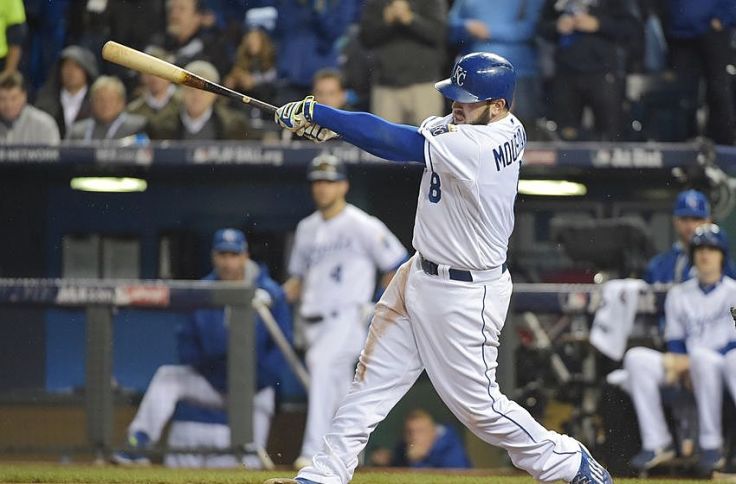
Since the 2017 campaign wrapped up in October, all we have heard from those surrounding the Kansas City Royals front office was how Eric Hosmer was the player they wanted to rebuild around out of their recent crop of free agents. In fact, the push to bring Hosmer back took another step forward on Monday , as Mitch Moreland re-upped with Boston, taking them out of the hunt for Hosmer’s services. So while the Royals might have to step over San Diego or St. Louis to sign him, in my eyes he isn’t the Kansas City free agent that Dayton Moore should even be targeting. In my humble opinion, the focus should have been on Mike Moustakas all along.
It’s easy to see why they picked Hosmer initially; he is a year younger than Moustakas, has been almost injury-free throughout his career and has racked up a nice resume of awards, including four Gold Gloves’, a Silver Slugger and an All-Star Game MVP to round it all out. Hosmer has shown himself to be a charismatic interview, a team leader and a player that both men and women adore, sometimes for different reasons. It’s easy to see him as the face of an organization that will be transitioning to a team looking to rebuild and get younger. But it also ignores a number of factors that could be detrimental for Kansas City in the long run.
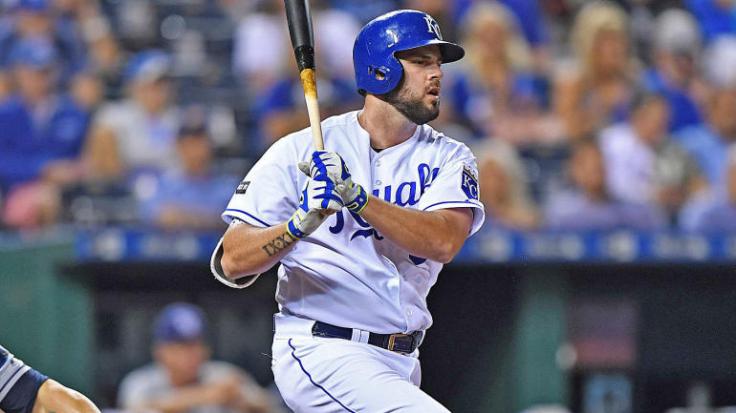
If Hosmer returns to Kansas City, his contract would not only take up a large portion of the payroll, it would also cause a conflict with the length of it. More than likely he would be getting a five or six-year deal if Kansas City brought him back, which means he would be manning first base through at least the 2022 season. This could be a possible roadblock for first base prospects Nick Pratto and Samir Duenez. Pratto has been ranked as the number one prospect in the organization and will be entering his age 19 season in 2018. It is easy to conceive him being ready for the big leagues in four years while Duenez could ready even sooner. Meanwhile, there is no major third base prospects in the Royals system (Hunter Dozier is listed as a 3B, yet played more innings in the outfield in 2017. Because of that and the fact that the Royals rarely mention him in the context of the third base discussion, I am considering him as a OF/1B), with Emmanuel Rivera being the top rated one at #16. So if the Royals signed Moustakas to a new deal, he wouldn’t be keeping anyone’s spot warm, so to speak. It would also make sense that Kansas City wouldn’t be bringing Moose back on the same length of deal as Hosmer. I could easily see the team signing Moustakas to a 3-4 year deal instead of the 5-7 years that Hosmer would probably be getting. Add in that Moustakas would probably be in the $15 million dollar a year range and it’s easy to see where he would give the Royals more flexibility with their payroll.
Adjustments also play into this discussion. One of the big talking points this winter has been whether or not Hosmer would adjust his swing to where he would be hitting the ball in the air to tap into his power potential. In fact one of his major suitors, the San Diego Padres, have just that concern:
Whether Hosmer is truly willing to alter his approach could play a sizable role in his free agency. Are suitors bidding for a 25-homer hitter or a player who retains untapped power potential? The historically spendthrift Padres and other teams must contemplate the answer to that question.
Most of the concern lies in his ground ball rate, which has been alarmingly high for years now. Hosmer has not had a ground ball rate below 51.2% since his rookie year and the last two seasons have seen him produce a 58.9% and 55.6% rate when it comes to ground balls. While he still put together a great offensive season in 2017, there has been a feeling that he would see even more success if he put the ball in the air more. Even Hosmer is aware of this:
“You look at the averages and all that, it’s definitely better with the ball in the air,” he told the Kansas City Star in April. “Most guys, especially power hitters, are trying to hit the ball in the air. Our stadium is playing a little different, it’s bigger out there, but still, somebody in my spot in the lineup, and type of hitter I am, I should definitely be trying to hit the ball in the air.”
Problem is, we have rarely heard about him working on his game. There was a small adjustment he made late in the 2014 season and when he started laying off inside pitches early in the 2017 campaign. Meanwhile with Moustakas, there has been a number of times he has worked on a part of his game in the offseason with improved results. Before the 2012 season Moustakas spent the winter working on his defense and improved himself at third base to the point he almost beat out Adrian Beltre for a Fielding Bible Award. Then in 2015, there was his adjustment hitting to the opposite field , which forced teams to halt their extreme shifts on him. He then worked on hitting for more power before the 2016 season, which eventually saw him break the Royals 32 year, single season record for home runs. We know that if there is a part of his game that needs work, Moustakas will put in the work. This is not to say that Hosmer won’t, but there also isn’t as much proof that he will.

When comparing the two, one would expect Hosmer to edge Moustakas out in offensive production but the numbers might surprise you. Both were called up in 2011 and both have dealt with a decent amount of adversity, so let’s start out with the raw career totals. Hosmer has produced a line of .284/.342/.439 over his career while Moose has a line of .251/.305/.425. The two are also fairly close in OPS, .781 to .730 and Hosmer has a decent lead in overall OPS+, 111 to 96. It is apparent that Moustakas’ struggles in 2013 and 2014 dragged him down in the career section of this experiment. But when you compare their numbers over the last three seasons, they end up being very similar. Since 2015, Hosmer has hit .294/.359/.463 with an OPS+ of 119. Meanwhile, Moose has hit .275/.329/.496 with an OPS+ of 117. Hosmer has hit for a higher average and has a higher walk rate in that span while Moustakas has hit for more power. But where Moose starts to show an advantage in the numbers is strike out rate, where he edges out Hosmer 13.8% to 17.2%. Moustakas also has a higher percentage of extra base hits, 10% to 8.1%. While factoring in that Moustakas missed a good chunk of the 2016 season, the numbers imply that there isn’t a giant difference in the actual offensive output by these two, just a difference in how they get there.
The one concern that has been batted around about Moustakas is his leg injuries during the last two seasons. While it is obvious why teams would be leery about this, one can make the argument that both were fluke injuries. The torn ACL in 2016 was on a collision with Alex Gordon, a play that can just be chalked up to two players hustling for a fly ball. The knee issues this past season began after Bruce Rondon hit him in the hip with a 99 MPH fastball. This resulted in a bruise that would drain fluid in his knee over the next couple of weeks. Moustakas would aggravate the knee a few weeks later and would deal with the issue off and on over the last six weeks of the season. Neither injury feels like a trend and would almost fall into the category of bad luck.

One final consideration for re-signing Moustakas is the state of the third base market this offseason. With Zack Cozart signing with the Angels, Evan Longoria being traded to San Francisco yesterday and Manny Machado and Josh Donaldson’s names coming up in trade discussions, teams have taken their focus away from Moose. With the market drying up for him, it’s possible he wouldn’t even be able to sign a deal worth more than $50 million; if that would happen, the Royals would go from getting a compensatory pick after the 1st round of the draft next year to getting one closer to #80. If that is the case, Kansas City would almost get more value out of bringing him back than the pick they would get for him at that spot. It’s hard to imagine a team at this point offering him a long-term deal, and with fewer years come less money. If it looks like he won’t get a deal above $50 million (and that appears to be what is happening) then Kansas City might be better off to swoop in and lock him up.
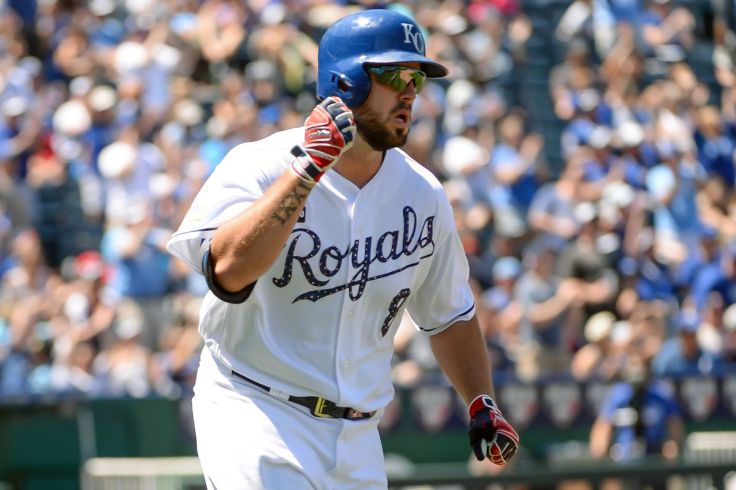
While I am all for a rebuild for the Royals, Moustakas feels like a safer option than Hosmer to build around. It would place less strain on the payroll, would allow greater lineup flexibility in the near future and would still give the team a leader for the younger players to learn from. While Hosmer is the shiny star, Moustakas is the understated grinder. Hopefully the glint from Hosmer hasn’t blinded the Royals front office from seeing the value they would get from Moose.

